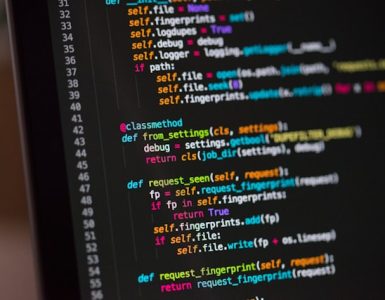Which programming language you start learning first largely determines your speed of mastering the profession and your success in it. So how do you choose it? Let’s take Python as an example.
What criteria should you use when choosing your first language?
To learn quickly, the programming language should have a simple syntax. It is desirable that it was a high-level, flexible – then you can experiment with different variants of the same task.
Of course, we can not claim that the choice of the first language always determines how successful the future career path of a student. But it can have a strong influence on professional development, as well as self-education skills.
Even if we talk about spoken languages, you probably heard the statement that the language in which a person communicates determines his thinking: “how many languages you know, so many times you are a person. This statement is also true for programming. Note that this skill is often referred to as an effective thinking tool that teaches people quality problem solving.
When choosing your first language, also consider criteria such as:
- scope;
- relevance;
- paradigm (OOP or FP);
- simplicity of syntax;
- the size of the programming community;
- the number of tutorials that are freely available.
Ideal programming language for learning as a first is hard to call, but Python clearly meets most of these criteria, which means it can safely recommend it to beginners.
Scope of Python
Scripting languages are quickly gaining popularity. They are already used to write software even more often than traditional system languages. Python is compatible with all major operating systems and platforms. It is used extensively in science, web development, Machine Learning, game development, complex visual effects, and more.
Community, Technical Documentation
The Python language has gathered a large community of developers from around the world who are not only studying it, but also developing it. Documentation base related to Python is extensive and well-developed, so even a beginner can not make much trouble to find answers to almost all of your questions. It has standard libraries for everything, and even more open-source repositories.
Simplicity
Because of Python’s simple syntax, your code is easy to read and understand. Operators end at the end of a line, and the block structure is indented.
Among the features of Python is the use of indentation, which delimits blocks of code. Proper formatting is ensured by the interpreter, which prevents creating unreadable code. So while in other programming languages indentation is a “handwriting” and art, in Python it is one of the components of syntax. Here’s an example:
If we moved the for statement to the left, there would be a syntax error.
Simple Python programs are indeed impossibly simple. For example, this is what “Hello World” looks like on the screen:
Python’s semantics are elementary. Thanks to dynamic typing, you don’t have to declare variables. This not only makes the code concise, but also avoids a number of common errors.
And due to its similarity to everyday English, Python code will be easy to read even for those just taking their first steps in programming.
Python’s Strengths and Weaknesses
We have already noted above some of the advantages of Python, we suggest comparing them with the disadvantages to objectively evaluate the language as the first to learn.
Pros
- Easy to learn.
- Concise.
- Easy and clear syntax.
- Interpretability.
- Extensive sphere of usage.
- Usability.
- Dynamic typing.
- Large number of libraries.
- Lots of technical documentation, training materials.
- Cross-platform.
Disadvantages
- Slow speed of program execution: Since the code in dynamic typed languages is executed line by line, it complicates the development of software that requires high performance. However, the programmer’s productivity increases, which can be considered a kind of compensation.
- Programs created in Python require a lot of memory.
- Since there is no check during compilation, sometimes errors occur during code execution. Because of this, very good testing is required before the working run.
In conclusion
Python is clear, easy to learn, versatile, popular and promising language. Despite the presence of certain disadvantages, its advantages significantly outweigh all the minuses, especially when it comes to novice programmers. That’s why Python is a great choice to start your IT career.







































Add comment